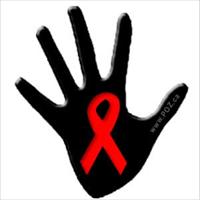AFRICA: HIV shifting to less educated

AIDS has long been characterised as a disease of poverty that has spread most rapidly in sub-Saharan Africa, the world's poorest region. But a new assessment has found a shift over the last decade in the socio-economic profile of Africans most likely to be infected with HIV.
In 2001 a team led by Dr James Hargreaves of the London School of Hygiene and Tropical Medicine (LSHTM) looked at studies conducted in sub-Saharan Africa, mostly before 1996, to determine whether there was an association between education levels and HIV infection.
Counter to the commonly held wisdom, they found that individuals with higher levels of education were more likely to be infected with HIV than those less educated. They surmised that better educated people were probably wealthier, more mobile and more likely to have multiple partners.
"Prior to the mid-1990s there really hadn't been a massive global response to HIV; there wasn't a lot of information available, so it's not surprising that people with more education and more money who moved around more were more likely to be exposed," Hargreaves told IRIN/PlusNews.
Using the same method to screen 4,000 studies for data comparing educational attainment and HIV status, the new research by the LSHTM team found that this trend had reversed. Post-1996, concentrations of HIV infection in sub-Saharan Africa have shifted from the most educated to the least educated.
"What's happened since [1996] is that a colossal amount of energy has been generated to try to deal with the problem, and now there's a huge amount of information available out there, as well as condom programmes," said Hargreaves. "So I think we're seeing the benefits of that amongst groups who get the most out of that information and are most able to change their behaviours."
The 36 relevant studies, conducted in 11 countries between 1987 and 2003, found that HIV prevalence had sometimes increased among the less educated even as it fell among the overall population.
The studies looked only at levels of schooling and not the extent to which education included information about HIV or reproductive health. "This work is important because of what it reveals about the association between HIV and socio-economic status, rather than the quality of specific HIV-prevention programmes," noted Hargreaves.
The article, published this week in the journal, AIDS, supports the findings of other studies that have linked school attendance with sexual behaviour change.
A study by Hargreaves' team at LSHTM, in conjunction with the University of the Witwatersrand, published this week in the Journal of Epidemiology and Community Health, compared HIV prevalence and the sexual behaviour of young people in rural South Africa who stayed in school with those who had dropped out.
They found that both sexes of those in school reported fewer sexual partners. Female students were also more likely to use condoms and have partners closer to their own age, while male students were much less likely to be HIV positive than their out-of-school peers.
"In some respects these and other data are good news; there are emerging signs that at least in some places the things we've been doing have probably had an effect," said Hargreaves.
"We must continue to do what we're doing and do more of it. At the same time, this work also suggests that maybe we need to bolster these strategies with other ones that really address people in the poorest parts of society."
The article recommends expanding the reach of HIV-prevention programmes to target socially vulnerable groups more effectively, and making education more equitable, for example, by removing primary school fees.
See Also
- SOUTH AFRICA: Hospital project attempts to revive Johannesburg inner city
- UGANDA: HIV positive religious leaders break silence
- NAMIBIA: HIV/AIDS dulls shine of good development scores
- GLOBAL: Number of desperately poor in Africa has ‘levelled off’ - UN
- Linda Mbiko: "Johannesburg is a place of gold, but it's not easy to get that gold, even if you dig"
 Back and Next - Back and Next
Back and Next - Back and Next See Also - See Also
See Also - See Also